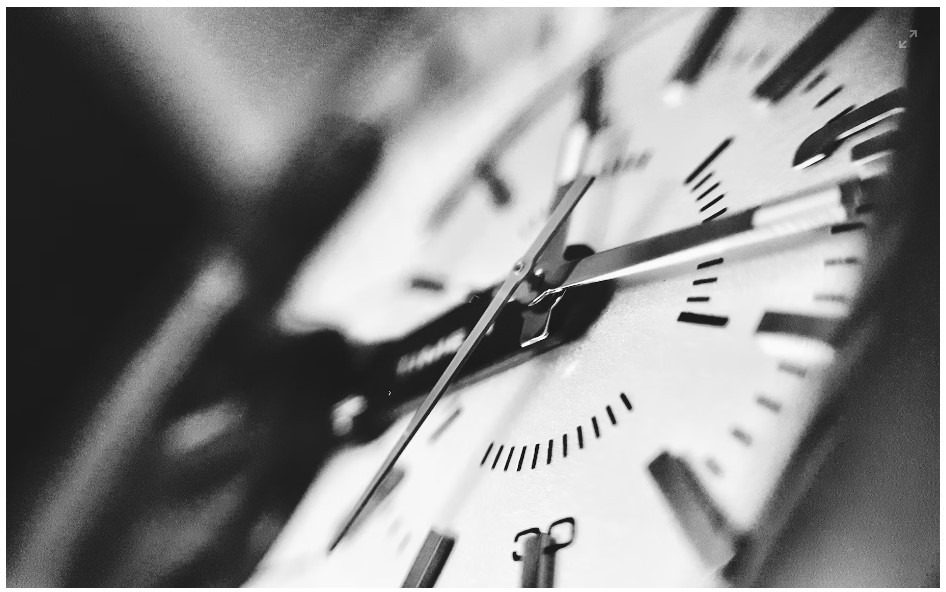Since 3,500 BC, clocks have helped us measure and show time and since then we have been measuring it in different ways with the use of candle clocks, sundials, water clocks, and hourglasses. And today, we use a base-60 time system which means there is a 60-minute and 60-second increment clock. But did you know that the use of the base-60 time system dates back to 2,000 B.C from the Sumerians?
Before, the clock was called “daegmael” which is an Old English word which means “day measure”. The clock is a word that came from the French word “cloche” which means bell and it has been used since the 14th century, the time when clocks started going mainstream.
Around the start of the 14th century, the first mechanical clocks were created in Europe and It has been the standard timekeeping device until the pendulum clock was invented around 1656. There were several types of machinery that came together throughout the years that give us the modern timekeeping pieces we know today. That’s why in this article we are going to find out who are the brilliant minds behind the modern clocks we know today.
Monastery Clocks and Clock Towers
The Christian mons were known to be the earliest European clockmakers. The first ever recorded clock that was made by a Christian monk was built by Pope Sylvester II around the year 996. Pope Sylvester was a scholar and a teacher. He promoted the study of mathematics, Greco-Roman arithmetic, astronomy, and he even reintroduced to Europe the armillary sphere and the abacus. After Pope Sylvester’s clock, more sophisticated church clock towers and clocks were built by other monks. In fact, a 14th-century monk named Peter Lightfoot created one of the oldest clocks that still exists today and it is still in use at the London’s Science Museum.
Wrist Watch
The first ever portable clock was invented by Peter Henlein at Nuremberg, Germany in 1504. He was the first craftsmen to create small ornamental watches that can be worn as pendants or attached to clothing and he called it pomander watches. However, it was not that accurate. On the other hand, French mathematician and philosopher Blaise Pascal was the first man that was reported to actually wear a watch on the wrist. Pascal’s wristwatch worked with a piece of string that he attached in his pocket to his wrist.
Pendulum Clock
The pendulum clock was the most accurate clock back in 1656 and it was invented by Christian Huygens. Christian Huygens was a Dutch physicist who was also an astronomer, inventor, and mathematician. Aside from the pendulum clock, Christian Huygens was also popular for his groundbreaking contributions in mechanics and optics. He was also known for his studies about the rings of Saturn and the discovery of its moon named Titan.
Mechanical Alarm Clock
Levi Hutchins of Concord, New Hampshire created the first mechanical alarm clock in 1787. But the ringing bell alarm on the clock he created could only ring every 4 a.m. Almost a hundred years after that, the first mechanical wind-up alarm clock that can be set to alarm any time of the day was created by Seth E. Thomas.
Standard Time
In 1878, Sir Sanford Fleming invented standard time or the synchronization of clocks within a geographical area to a single time standard. Sir Sanford Fleming develop the idea out of a need to aid weather forecasting. In the 20th century, the standard time was developed into a more organized pattern as experts divided geographical areas and evenly spaced them into time zones. Aside from developing the standard time, Sir Sanford Fleming also designed Canada’s first postage stamp and he also engineered the Canadian Pacific Railway and the Intercolonial Railway.
Quartz Clock
A Canadian telecommunications engineer named Warren Marrison developed a highly accurate clock based on the regular vibrations of a quartz crystal in an electric circuit. He discovered that idea while he was searching for a reliable frequency standard at Bell Telephone Laboratories.
Big Ben
The Westclox Clock Company issued a patent for the Big Ben alarm clock at London in 1908. The most amazing feature of Big Ben is the bell back that completely envelopes the inner case back and it is the most important part of the case because the bell back delivers the loud alarm.
Battery-Powered Clock
The Warren Clock Company that was founded in 1912 and they introduced a new type of clock that was powered by batteries. Before the battery-powered clock, the clocks were wound up or run by weights.
Self-winding Watch
In 1923, a Swiss inventor named John Harwood created the first self-winding clock. His idea of the self-winding watch was made possible through the support of a local businessman who believed in him. After creating the first self-winding clock, Harwood applied for a patent in Switzerland. He made sure that the design of his clock could be hermetically sealed against water or dust.

